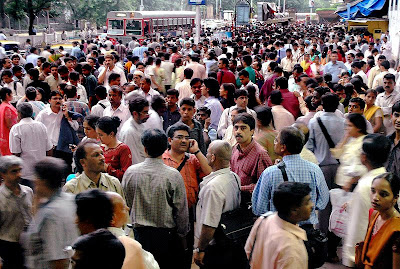Mumbai, also known by its older name Bombay isn’t called India’s city that never sleeps for nothing. Everyone who’s anyone knows the party and night atmosphere of Mumbai-Tourists, Residents, Office goers, Taxi Drivers, and of course Bombay’s very own Bollywood heart throbs. Bombay offers a phenomenal variety and number of pubs, discotheques and bars for the wildest of party animals, and for the pickiest of drinkers.
Bombay, as a city has now accustomed itself to its vibrant party atmosphere, and its alright if one just walks into a pub or a bar and grabs a shot. The city has grown to become comfortable with alcohol.

Cafe Mondegar at Colaba Causeway offers draught beer, Imported Beer and tongue twirling fruit cocktails. The place is relaxed and the music is more of old time Rock Classics. The crowd has a majority of students, and the place is a favorite for Westerners.
The Ghetto at 30 Bhulabhai Desai Road serves beer by the pitcher with all time Rock n Roll hits jamming away at the side. The place also has pool tables where one can catch up with friends, or just play a good game of snooker. The wall graffiti provides humorous reading and is a great pass time.

The Inside Story, located inside Cafe Mondegar is truly is Mondegars “inside story” for it act as the inner sanctum, an English pub with a dark atmosphere though the clientele is mostly male, with a few bouncers thrown around.
Jazz by the Bay next to the Pizzeria, 143 Marine Drive is the place to be, since it is indeed the Official Channel V pad. A great place to head off to, after helping oneself with Pizza at the neighboring Pizzeria. Jazz festivals take place pretty often here with both Indian and foreign artists performing, and weekends are great too, with DJs spinning out the latest tracks for the dance floor.
The Tavern, Fariyas Hotel, is more of an English-style pub, complete with wooden beams, the usual English paraphernalia, and great music.
J49 at Juhu Residency Hotel is a packed discotheque. J49 is one of the hippest places in Mumbai that’s actually entirely worth checking out if one is a regular party goer. The alcohol is a blend of the best spirits available, and the cocktails and tall drinks taste just perfect. Not only that, the liquor is actually affordable and smartly priced. The place has mirrors placed all over, along with Egyptian styled statuettes; mind blowing lighting and a huge, huge dance floor. Unlike the other discothèques of Mumbai which are quite cramped, J49 has got lots of space they also have therapeutic and trance music sweeping the floor.
The 1900s at the Taj Mahal is one of the better discotheques where entry is free to guests, but otherwise it’s for members only. Often visited by the who’s who of Mumbai, this is one place nobody should miss.
Fashion Bistro at 16 Marzban Road is one of Mumbai’s latest discotheques on the nightclub scene, with mannequins displaying the latest and hottest designer wear in one room, and a bar and dance floor with ear-deafening music in another.


